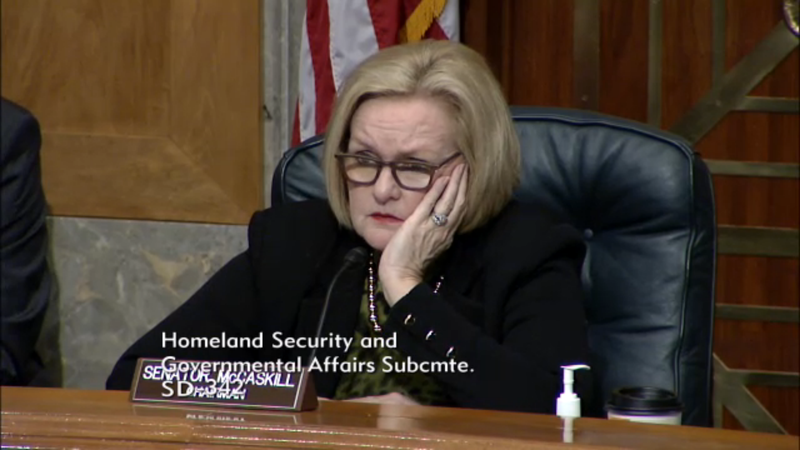User interface pro tips with Senator McCaskill

Photo Credit: HSGAC, Subcommittee on Contracting Oversight
Yesterday morning the Subcommittee on Contracting Oversight held a hearing on contractor performance information and its ease of use for oversight purposes. Senator Claire McCaskill, Chairwoman of the subcommittee, politely but intensely grilled Kevin Youel Page, the GSA representative, on the lack of information in the contractor performance databases, noting that CGI Federal still did not have negative performance ratings reported to the databases, despite their extremely public failure to deliver a functioning Healthcare.gov. The Chairwoman even went so far as to do a live demo of the web-based performance databases, noting the inability to use the back button in any browser other than Internet Explorer, saying the feature was “pretty basic in 2014”.
The subcommittee isn’t the first to cover problems with contractor performance data. The main issues highlighted were the number of distinct (but slightly overlapping) databases used to report and research contractor performance information, the low quality of the data in those databases, and the inability to reliably identify and track changes in company ownership. The databases discussed include the Past Performance Information Retrieval System (PPIRS), The Federal Awardee Performance and Integrity Information System (FAPIIS), and the Excluded Parties List (EPLS).
Chairwoman McCaskill zeroed in on several issues that are critical to improving oversight of contractors. She repeatedly asked Page why past performance of contractors was considered privileged, source selection sensitive material. In fact, the Federal Acquisition Regulation (FAR) defines past performance as sensitive material that should not be disclosed publicly. But this needs to change. By protecting this information, it not only makes this information more difficult to access by contractors in other areas of the government, but prevents this information from being shared with citizen watchdogs and local governments, which often use the same contractors. We hope McCaskill and her colleagues pursue changes to the FAR that allow this information to be transparent and publicly available.
The committee also discussed the problems with contracting officers being able to reliably identifying companies. For example, McCaskill noted that Lockheed Martin has over 80 different DUNS numbers (the current identification system used for government contractors), making it nearly impossible for contracting officers to reliably identify and report performance information on them. Indeed, this has long been an issue in not only government contracting, but also in financial markets, patent filings, and campaign finance. Probably the most egregious example mentioned in the hearing was the case of AMS, a company that contracting officers had identified as having multiple performance issues when contracting with the government. This company was later acquired, and renamed to CGI Federal. That simple name change allowed AMS (now CGI Federal) to bid on and receive government contracts without their previous performance record surfacing.
However there were several heartening take-aways from the hearing that indicate GSA is on the right track to fixing some of these issues. When responding to McCaskill’s questions on identifying companies, Page said that they were considering several options besides DUNS numbers, including CAGE codes, which the federal government maintains, but also the Global Legal Entity Identifier system that is being developed by the Financial Stability Board, in conjunction with the G8 countries. This effort has seen remarkable progress in the last two years and is by far the most advanced effort to track company registrations and the hierarchical structure of company networks. It’s very exciting to see that there is interest from the executive branch in moving away from proprietary, expensive, and poorly implemented DUNS numbers to a more effective and open system.
Page also stated in his testimony that GSA was moving towards an open source platform for a lot of the above mentioned databases. The current effort to consolidate all of these systems has been plagued by cost overruns, poor functionality, and schedule delays. We think a move towards open source will help get this effort back on track and prevent future vendor lock in.
McCaskill concluded the hearing by stating that reforming these systems was “complicated and hard, but really important”. Updating these systems, which are the backbone of contract oversight, has been long delayed, because it is difficult. But we can’t afford to not do it. We need to give our contracting officers tools that belong in this decade so that they can prevent the kind of contractor misconduct that is so prevalent now.

